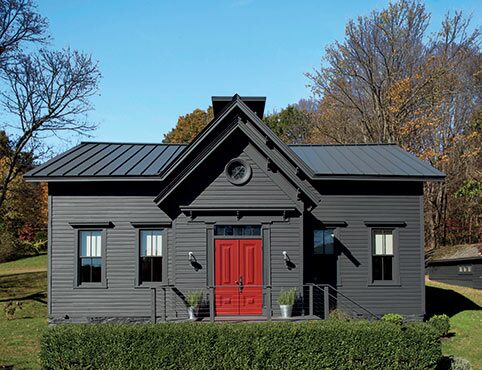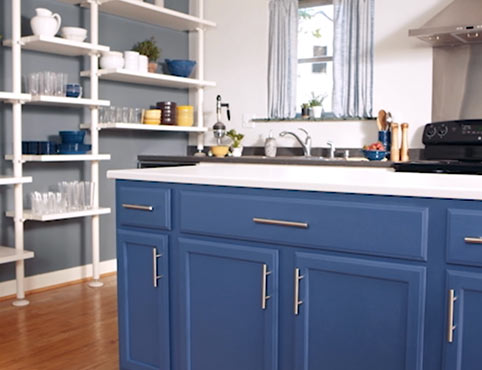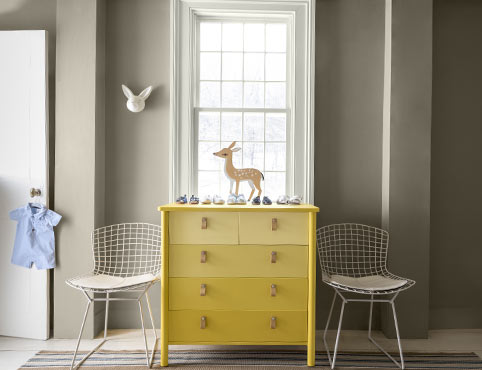How to Paint Wood Panelling Like a Pro
Whether you have high-quality varnished hardwood, simple veneer, or faux panelling, you can paint over wood panelling to give it a fresh new look.
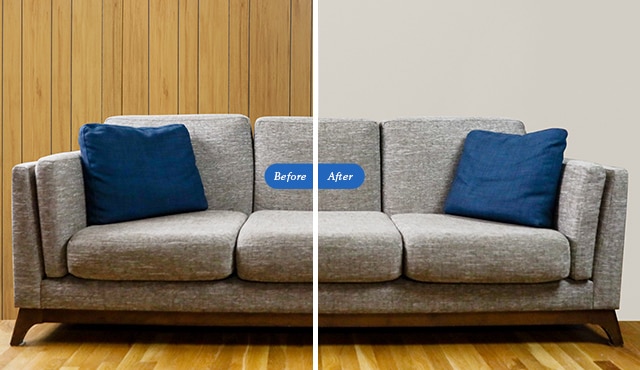
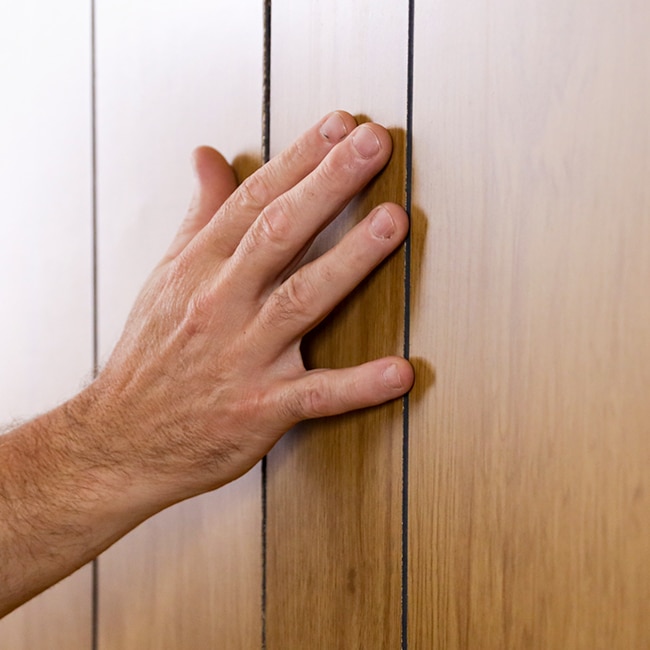
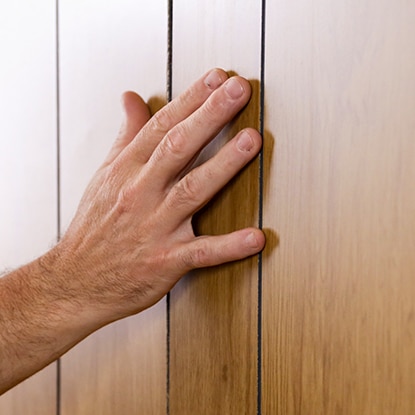
Step 1: Assess the Wood Panelling
Before you start, take the time to determine what type of panelling you have. Polyurethane finish, layers of paint, or even decades of cleaning product buildup can mask the material underneath.
To figure out what you’re working with, find an exposed edge of a panel. This may require removing an HVAC grate or a piece of baseboard moulding.
If your panelling is veneer (which has only a thin surface layer of wood grain), fibreboard, or composite instead of solid wood, be very careful not to damage it. If you are painting over wood panelling, you can proceed with cleaning.
Key Watchout
Veneer is a paper-thin layer of wood grain applied to a stronger—though unsightly—material like particle board or fibreboard. Be careful not to sand through it.
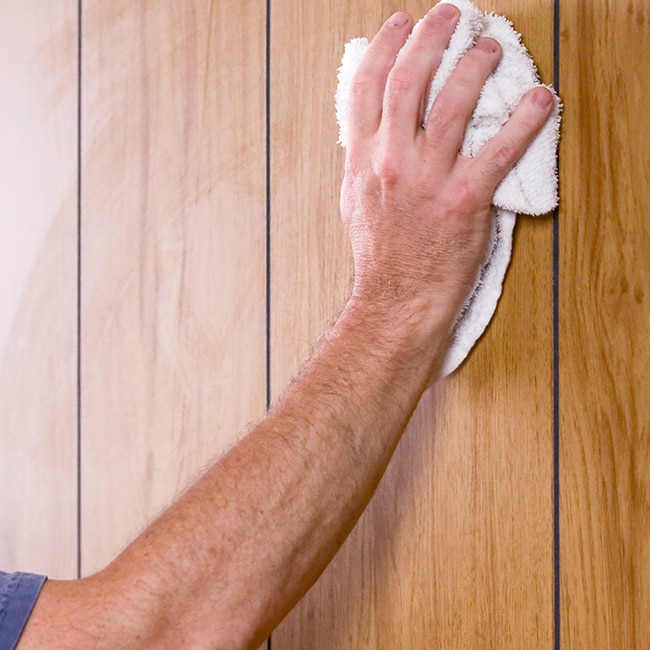
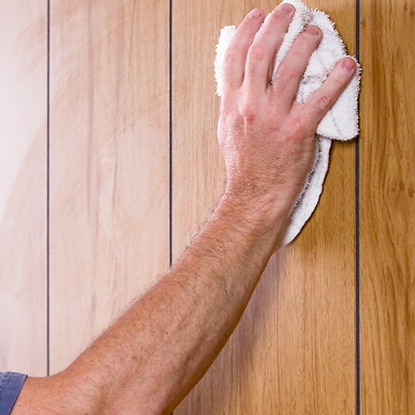
Step 2: Clean the Wood Panelling
Grease, grime, and even residue from cleaning products can really build up on veneer or hardwood panelling over the years and prevent your paint from fully adhering to the surface.
Be sure to remove all contaminants and residue with a degreasing cleaner before beginning work. If the panelling is still too glossy after cleaning, you may need to dull the surface a bit with a light sanding to make sure the paint has texture it can adhere to.
Take extra care if you’re dealing with veneer. Sanding can ruin the thin outer layer, exposing the fibreboard underneath.
Important
Safety Note
Whenever you’re removing an old surface through sanding, it’s important to protect yourself from potentially dangerous dust with a mask and goggles.
Safety Note
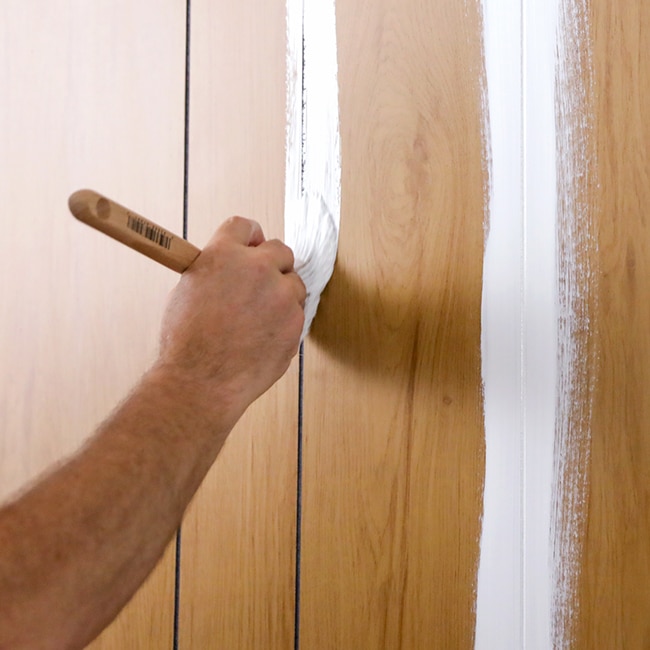
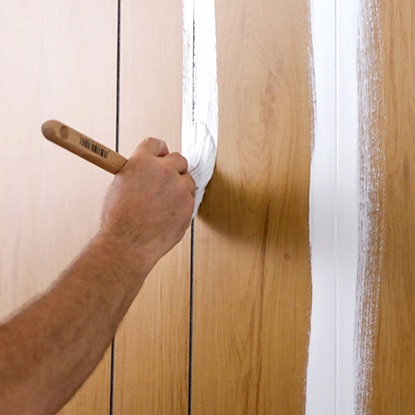
Step 3: Spot Prime Your Wood Panelling
Consider your desired result: Do you want a smooth wall, or would you like to keep the grooved look of panelling? If you want to keep the grooves, skip to Step 4.
If you want your painted panelling to have a smooth surface, check out the video on this page. You’ll need to prime the panelling first—at least the areas you plan to fill with spackling compound or caulk—to ensure you get the best possible adhesion. Primer options for wood panelling include the following:
- For laminate or veneer panelling, INSL-X® Stix® Primer, specifically engineered to bond with challenging glossy surfaces, will give you the best results.
- For hardwood panelling, INSL-X® Aqua Lock® Plus or Fresh Start® High-Hiding Primer will provide better stain blocking for real wood, with very good adhesion.
- For a tannin-rich wood like cedar or redwood, your best option is an oil-based primer such as Insl-X Prime Lock Plus.
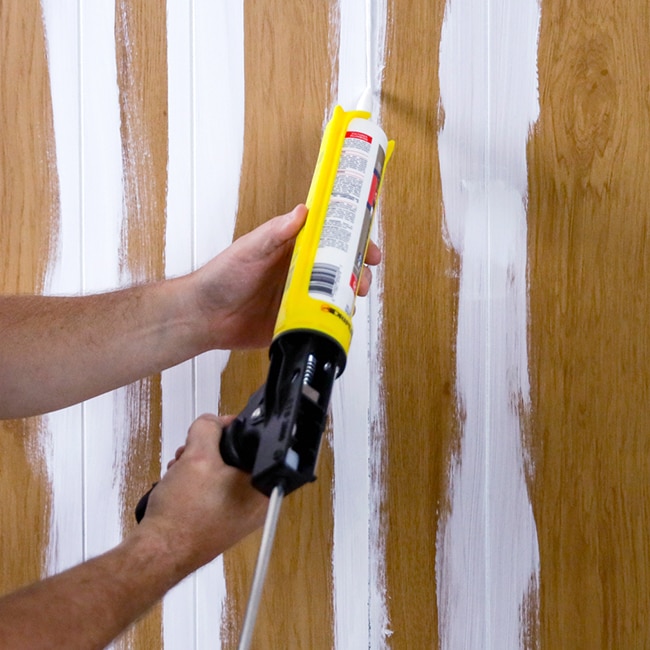
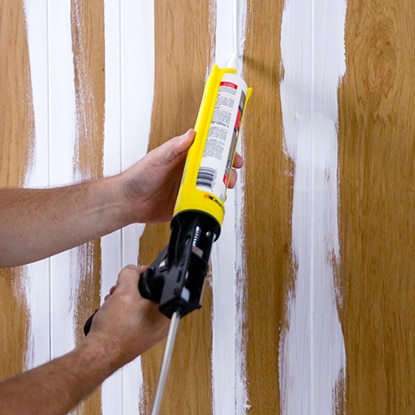
Step 4: Spackle and Caulk the Panelling
To get the best adhesion, wait until the first coat of primer has dried before spackling the panelling. If you’re going for a smooth look, use joint compound (also called drywall mud) or spackling compound to fill all the grooves in the panelling to meet the rest of the surface. Using a quick-drying “hot mud” or patch, which has a high pH level, creates unique challenges and is not recommended. If you do use it, be sure to use a 100% acrylic primer for best results.
Whether you’re going for a smooth or grooved look, fill in any seams between panels. For this, you should use caulk instead of spackling compound. Caulk will expand as the panels shift slightly over time, whereas spackling compound may crack.
Helpful Tip
Spackle or joint compound dries hard, while caulk can expand and contract slightly over time. That’s why spackling compound is better for filling grooves, and caulk is the better option for seams.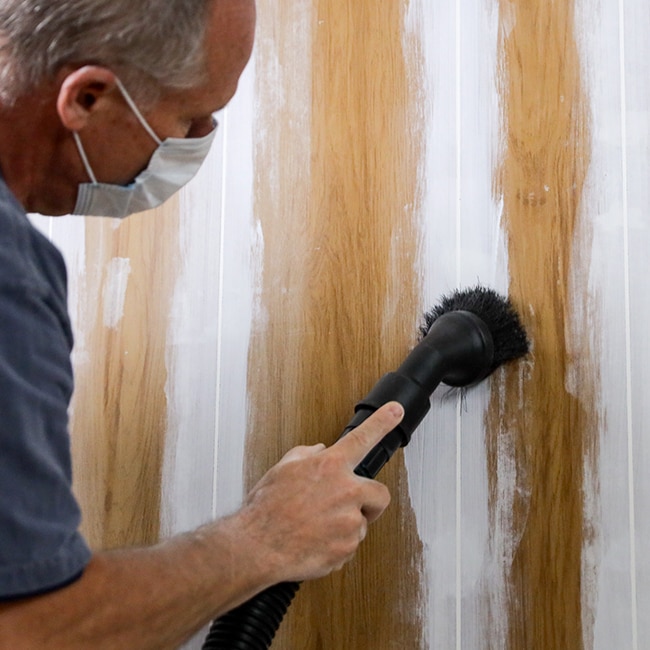
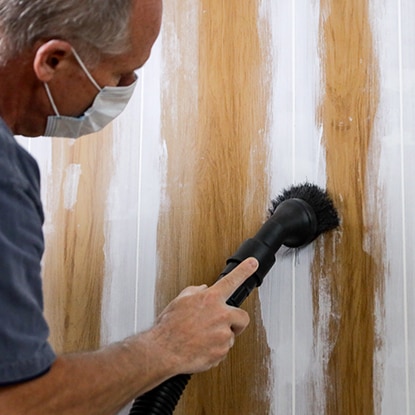
Step 5: Sand, Vacuum, and Tack for Smooth Panelling
A light sanding before painting wood panelling will create a smooth, dull surface that is free of imperfections and just rough enough to give the paint proper adhesion.
Using a fine sandpaper (220 grit is a good level here), focus on smoothing out any uneven areas or dried drips. After sanding, be sure to vacuum the panelling thoroughly and then tack or wipe everything down with a damp cloth to remove any remaining dust. Let it dry.
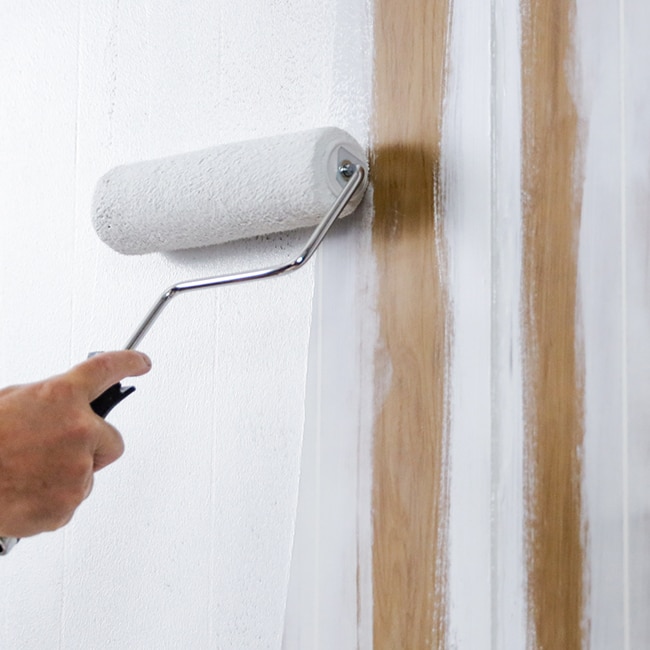
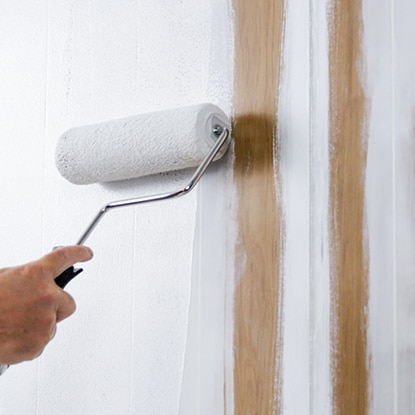
Step 6: Prime Your Wood Panelling Again
Re-priming after spackling and caulking is one of the most important things you can do to ensure an even, professional-looking finish. A second coat of primer helps to conceal the differences between the spackling compound and the panel surfaces, cover stains or knots in the panelling, and provide proper adhesion for your paint top coat. Let the primer fully dry as recommended on the label.
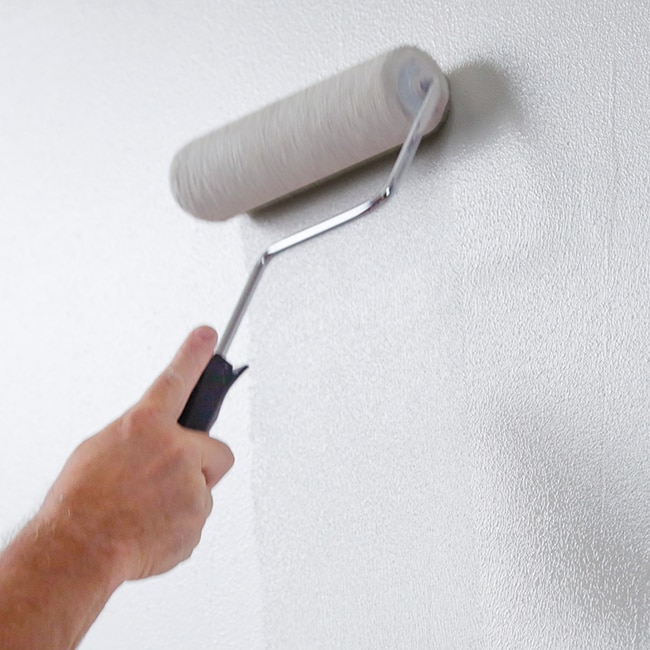
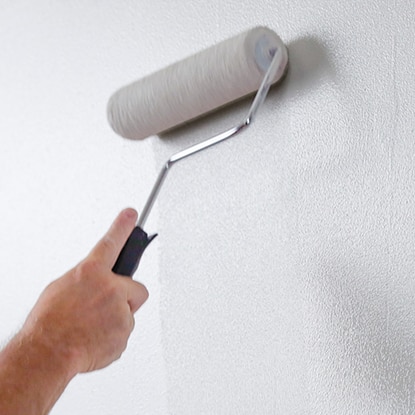
Step 7: Paint the Wood Panelling
Use a paintbrush to cut in to corners and edges first, then blend the seams as you coat the rest of the wall with a roller. Note that a lighter paint colour on dark wood may require an extra coat, depending on how well the primer masked the wood grain.
Step 8: Apply a Second Coat to Your Painted Panelling
When the first coat of paint is fully dry, apply a second coat for an even, spot-free finish. Be sure to allow 24 hours for the new finish to fully cure before placing any wall décor, fixtures, or furniture.
Different Paints Offer a Range of Finish Options for Panelling
Waterborne alkyds like Benjamin Moore Advance® offer an easy-to-apply top coat for painting panelling and cure to a durable, furniture-quality finish. Latex paints will give you more of a glossy or shiny look: Aura® Interior and Regal® Select Interior both offer rich, durable colour and provide a mildew-resistant finish.Benjamin Moore offers 3,500+ different colours from which to choose, and our 8 oz. paint colour samples are available for shipping right to your door to make decision-making easier.
Enjoy the Look of Your Freshly Painted Wood Panelling
Few projects have as much impact on the look of a room as painting old panelling. By taking the time to do the proper prep work, you can transform a dated room into a space that is fresh and beautiful.Frequently Asked Questions
Q. Can you paint directly over panelling?
A. You can paint panelling only after you have properly prepared the surface.
Instead of applying paint directly to your panelling, prime it first to ensure you get the best possible adhesion. Then sand the surfaces so they’re smooth and vacuum away any debris.
Be sure to remove all contaminants and residue with a degreasing cleaner before beginning work. If the panelling is still too glossy after cleaning, you may need to dull the surface a bit with a light sanding to make sure the paint has texture it can adhere to.
Q. What kind of paint should I use on panelling?
A. Waterborne alkyds like Benjamin Moore Advance® offer an easy-to-apply top coat for painting panelling and cure to a durable, furniture-quality finish. Latex paints will give you more of a glossy or shiny look: Benjamin Moore’s Aura® Interior and Regal® Select Interior both offer rich, durable colour and provide a mildew-resistant finish.
Q. What is the best colour to paint panelling?
A. When choosing the best colour to paint panelling, take stock of the space and the mood you want to impart, keeping in mind any unique architecture, exposed beams, and the like.
If you’re looking for a starting point, check out our tried-and-true most popular paint colours, where we highlight customer favourites such as Chantilly Lace OC-65, Revere Pewter HC-172, and Hale Navy HC-154.
As always, it is important to try before you buy. Benjamin Moore paint colour samples are available in 3,500+ colours and can be shipped to your door or picked up at a locally owned store.
Q. What is the best primer to use on panelling?
A. The best primer for wood panelling depends on the variety of panelling you have.
For laminate or veneer panelling, Insl-X® Stix® Primer, specifically engineered to bond with challenging glossy surfaces, will give you the best results.
For hardwood panelling, Insl-X® Aqua Lock® Plus or Fresh Start® High-Hiding Primer will provide better stain blocking for real wood, with very good adhesion.
For a tannin-rich wood like cedar or redwood, your best option is an oil-based primer such as Insl-X® Prime Lock Plus.
Q. Do you paint panelling with a roller or brush?
A. When painting your wood panelling, use a paintbrush to cut in to corners and edges first, then blend the seams as you coat the rest of the wall with a roller.

